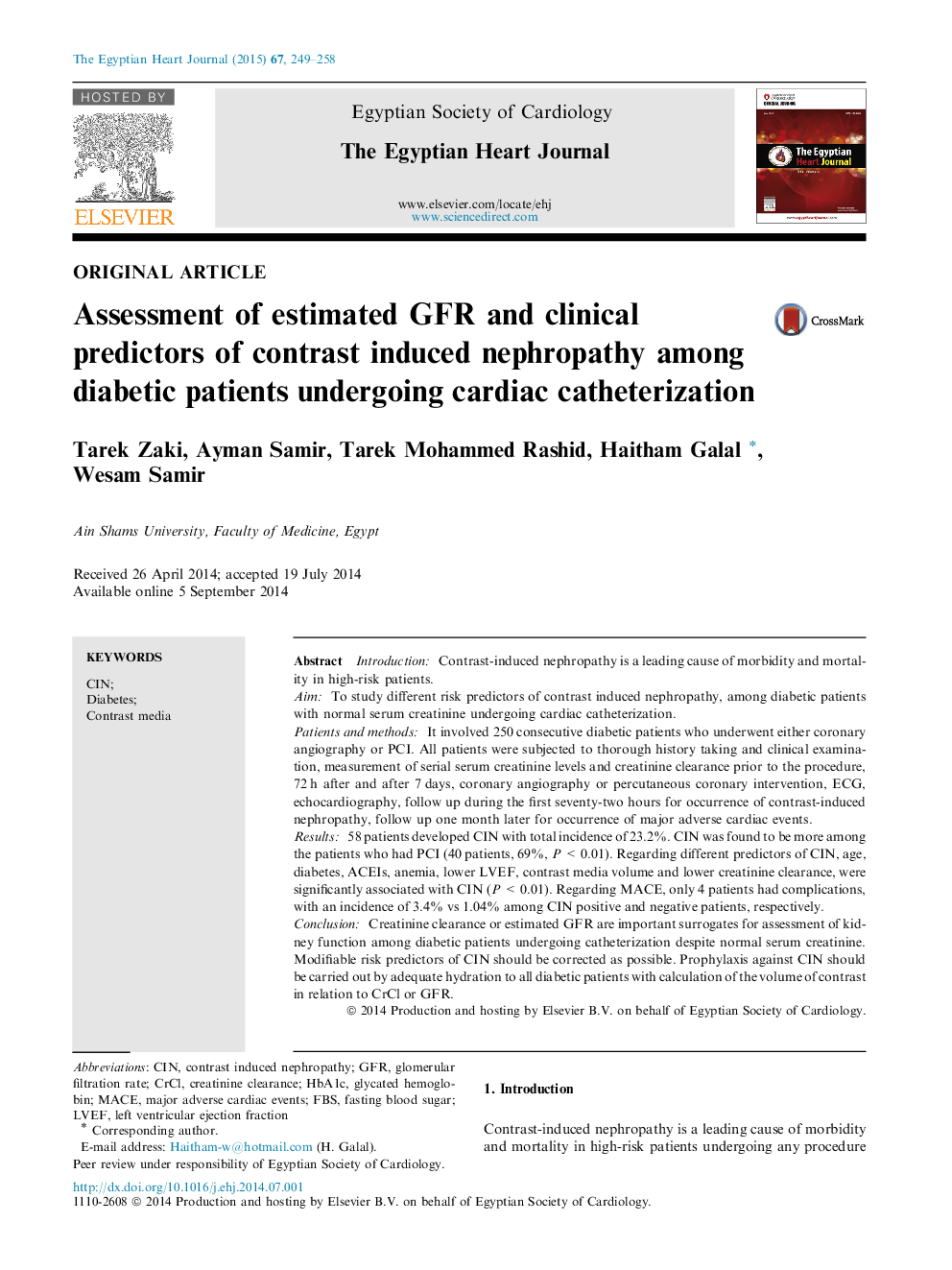| Article ID | Journal | Published Year | Pages | File Type |
|---|---|---|---|---|
| 2910582 | The Egyptian Heart Journal | 2015 | 10 Pages |
IntroductionContrast-induced nephropathy is a leading cause of morbidity and mortality in high-risk patients.AimTo study different risk predictors of contrast induced nephropathy, among diabetic patients with normal serum creatinine undergoing cardiac catheterization.Patients and methodsIt involved 250 consecutive diabetic patients who underwent either coronary angiography or PCI. All patients were subjected to thorough history taking and clinical examination, measurement of serial serum creatinine levels and creatinine clearance prior to the procedure, 72 h after and after 7 days, coronary angiography or percutaneous coronary intervention, ECG, echocardiography, follow up during the first seventy-two hours for occurrence of contrast-induced nephropathy, follow up one month later for occurrence of major adverse cardiac events.Results58 patients developed CIN with total incidence of 23.2%. CIN was found to be more among the patients who had PCI (40 patients, 69%, P < 0.01). Regarding different predictors of CIN, age, diabetes, ACEIs, anemia, lower LVEF, contrast media volume and lower creatinine clearance, were significantly associated with CIN (P < 0.01). Regarding MACE, only 4 patients had complications, with an incidence of 3.4% vs 1.04% among CIN positive and negative patients, respectively.ConclusionCreatinine clearance or estimated GFR are important surrogates for assessment of kidney function among diabetic patients undergoing catheterization despite normal serum creatinine. Modifiable risk predictors of CIN should be corrected as possible. Prophylaxis against CIN should be carried out by adequate hydration to all diabetic patients with calculation of the volume of contrast in relation to CrCl or GFR.
